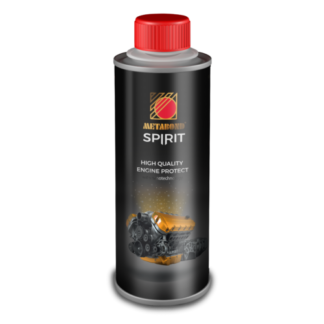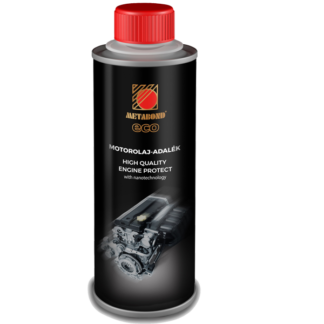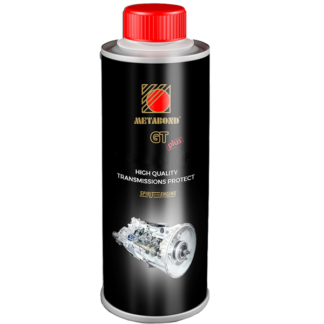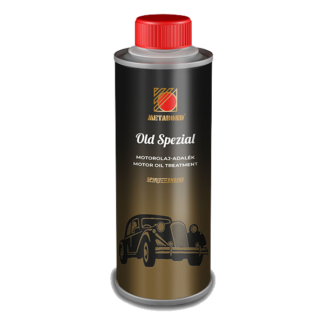During the operation of machines, components can move relative to each other, making lubrication essential. Ideally, lubrication should create an oil film of sufficient thickness between surfaces, ensuring that they do not come into direct metallic contact. This would significantly reduce frictional losses and wear. Although engineers have improved lubricating oils by adding additives to prevent them from thickening in cold conditions and thinning in hot conditions, they have not been able to guarantee the safe separation of moving surfaces.
Due to surface irregularities, oil is unable to form a stable, homogeneous film layer. As a result, during machine operation, surfaces slide against each other with great force, causing surface deformations and abrasions. Over time, oil contamination, high pressure, and temperature cause oil to age, lose its viscosity, and the oil film to break repeatedly. This leads to increased metal-on-metal contact, spontaneous damage, and ultimately, machine failure.
Metabond: A New Opportunity
Metabond is a cutting-edge, award-winning, and environmentally-friendly solution (patented in 1989 and awarded at the 1991 IAA Automotive Exhibition in Frankfurt) that addresses numerous previously untreatable problems. Instead of primarily improving oil quality, Metabond uses its unique properties to change the sliding metal surfaces themselves.
Its remarkable feature is that, under pressure, its complex hydrocarbon content chemically reacts with metal surfaces to create a new metal coating. This coating, with a thickness of a single metal crystal, forms a protective shield of exceptional hardness and surface smoothness, which resists damage from friction even under extreme load conditions.
This protective layer bends, folds, and fuses surface irregularities, creating a smoother surface. Microscopic indentations on friction contact surfaces fill and become embedded deeper into the metal’s internal layers with every movement. This process, akin to ironing, creates ideal conditions for lubricating oil by separating the contact surfaces with a homogeneous oil film.
Advantages of Using Metabond
The benefits of using Metabond are not limited to its ability to create a protective layer. Its usage significantly reduces the number of metal particles shed from friction surfaces, which would otherwise increase further friction if present in the oil. By reducing the amount of metal particles (sludge and deposits are minimized with Metabond), it modifies the tolerances of equipment and engines, increasing their efficiency and performance. Metabond can also be used in newly manufactured machines to ensure better efficiency and parameters.
The protection of friction metal structures is closely related to surface roughness and smoothness. Metabond also provides protection against slow surface wear. If the surface layer is chipped or worn away due to friction, it is immediately replaced with new Metabond-metal atoms. This ensures continued metal protection even after prolonged use and for a considerable period after discontinuing Metabond use.
Metabond is compatible with all synthetic and non-synthetic oils and greases. It directly builds a high-strength, ultra-smooth single-molecule protective layer on friction surfaces due to pressure and friction. The protective layer formed by Metabond has the following consequences:
- Prevents the possibility of direct metal-to-metal contact between rubbing machine parts.
- Forms a protective layer of crystal thickness on the surface of each machine part, which moves almost frictionlessly on each other with the help of the oil film between them.
- Using Metabond increases the engine’s efficiency and performance, reducing fuel consumption and energy requirements for propulsion.
- Provides protection for a while in case of partial oil shortage or complete oil loss.
- Significantly reduces friction in machines (up to 60-80%).
- Due to reduced friction, machines can operate at lower temperatures, run more quietly, and become more dynamic.
- As a result of reduced friction, the oil loses its viscosity much later, extending the oil change interval by approximately twice.
- Increases the machine’s inspection cycle, reducing maintenance work.
- In internal combustion engines, the use of Metabond reduces toxic gas emissions up to 30%.
- Suitable for use in all types and ages of machines.
- Treatment with Metabond roughly triples the remaining life of the components.
- Prevents corrosion of surfaces.
Application of Metabond: Using Metabond does not require expertise; simply pour a 5% weight quantity into the oil immediately after an oil change in a warm engine. Noise reduction is noticeable after 2-3 minutes. You will experience the other benefits after driving 2-300 km (for vehicles).
It’s important to note that Metabond’s effect does not disappear if used after every oil change. After the first use, it is sufficient to add a 2.5% quantity to the oil.
The Metabond product family includes Metabond grease and Metabond spray in addition to the oil additive. The grease should be used in areas with exceptionally high loads or where the machine must operate at extreme temperatures. The spray can be used in places where it is not possible to use oil or grease between rubbing surfaces.





